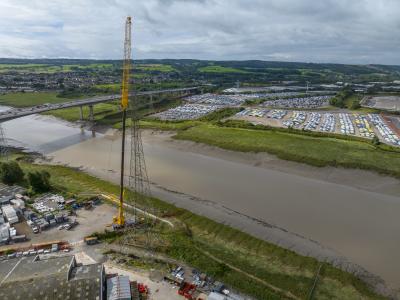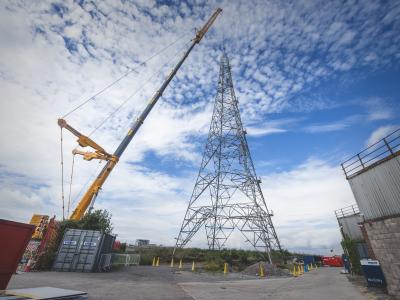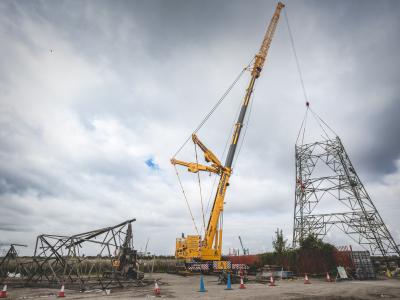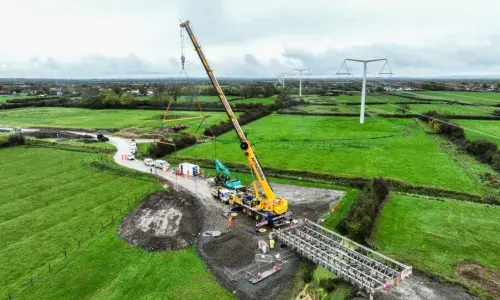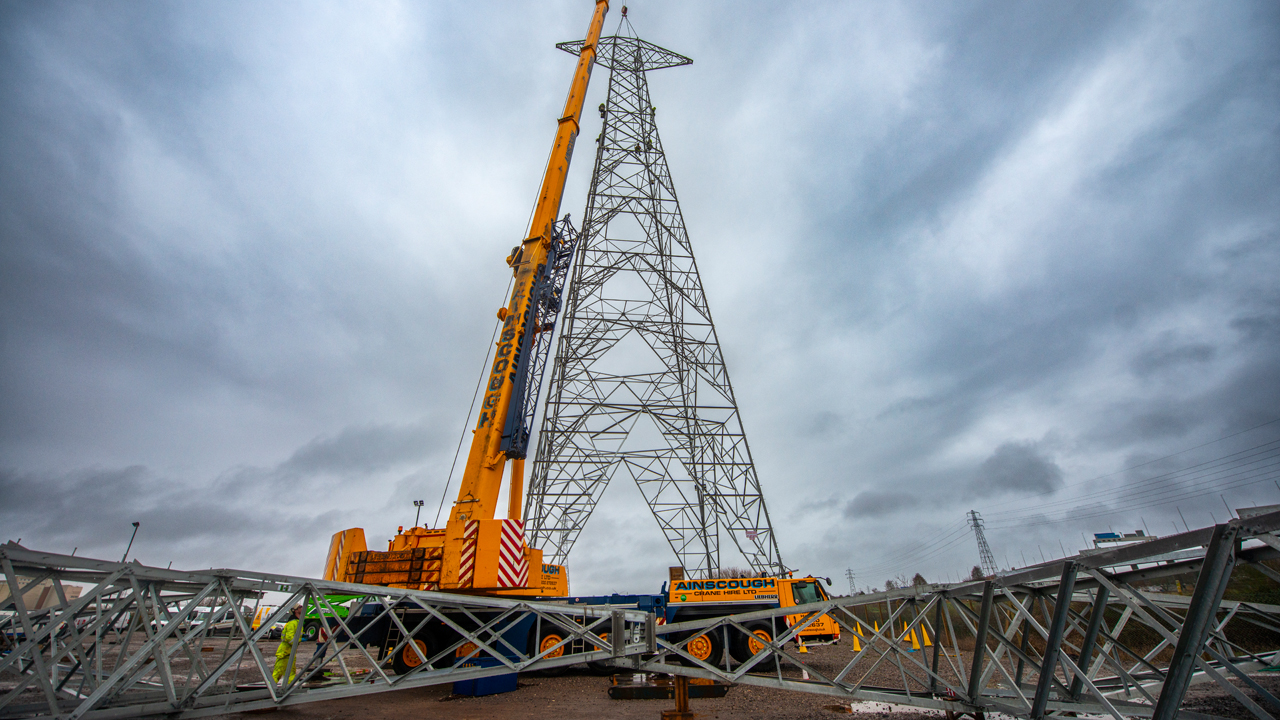
Waving goodbye to the gentle giants of the river Avon
91m high pylons removed from the mouth of the river Avon
The sky line at the mouth of the river Avon will forever be changed as the large lattice pylons that have stood on each bank for 90 years are removed to be replaced with smaller pylons as part of National Grid’s Hinkley Connection Project.
Dismantling the large pylons was a feat of engineering: a 650T crane together with an extension piece, called a fly jib, was required just to reach the top of the 91-metre pylons. The fly jib on its own is around 34m long and required a second crane to be on-site to connect it onto the 650T crane. This arrangement is over a 100m high, meaning the Civil Aviation Authority had to be contacted ahead of the works!
Both towers were dismantled in 10 different sections, due to their overall size and weight. The first pylon was dismantled between 9 and 11 August 2023, whilst the second was dismantled between 13 and 15 August 2023.
The gentle giants keeping watch over the mouth of the river Avon were first erected in the 1930’s and allowed large cargo ships to travel up and down the river unhindered. At Avonmouth, the difference between high and low tide can be as much as 40 feet (12.3 metres) – the second highest tidal range in the world. With each rising tide, enormous volumes of water push into the mouth of the river from the Bristol Channel, only to flow out again a few hours later. So, to ensure save travel up and down the river, the pylons were built to a height of 91 meters.
With cargo ships now smaller than they once were, the new replacement pylons are shrinking in stature. The new pylons will be 76-metres tall - 15 meters shorter but will still providing the height required to allow ships to travel up and down the river.
The other 25 lattice pylons being constructed by National Grid in and around Avonmouth will be 50 meters tall. National Grid is using lattice pylons in this area rather than the T-pylon design seen elsewhere on the Hinkley Connection route because the lattice design provides the height required across the River Avon, and means National Grid can navigate the tighter turning angles through Avonmouth’s industrial port area between the River Avon and Seabank substation.
Most pylons take up to four weeks to assemble with those near the River Avon taking approximately six weeks. All of the new pylons will be constructed and will have the wires in place by early 2024.
Steven Haskayne, Senior Project Manager on the Hinkley Connection Project, commented: “These gentle giants – a familiar sight on the skyline for generations - have been distributing power to serve the people of Bristol and Somerset for 90 years.”
“Watching them disappear from the skyline marks the end of an era, but we look forward to seeing the new pylons go up and continue to serve the local community, transmitting cleaner, greener energy as part of the Hinkley Connection Project.”
When completed, the new high voltage electricity line will connect six million homes and businesses to new sources of low-carbon, homegrown energy including the new Hinkley Point C power station.
Watch related video
